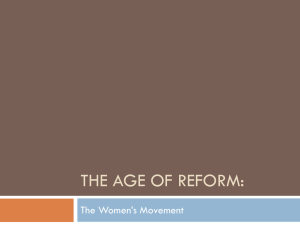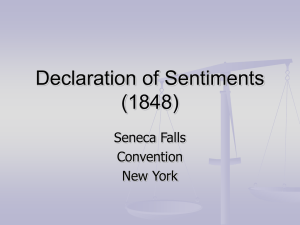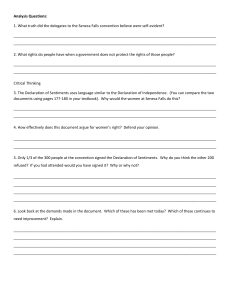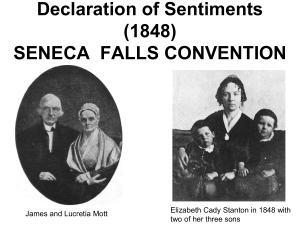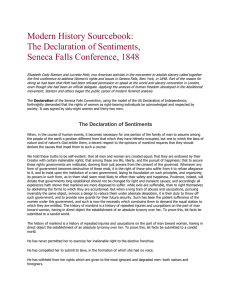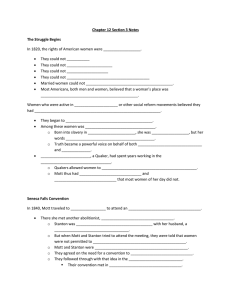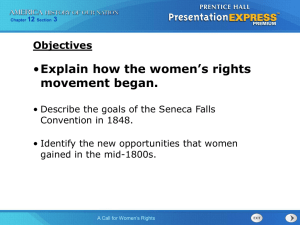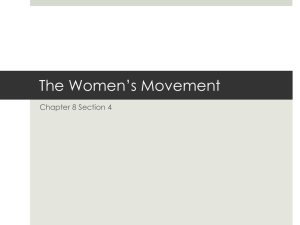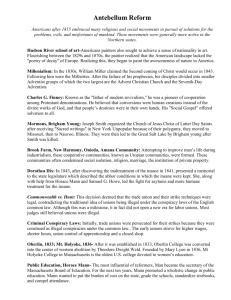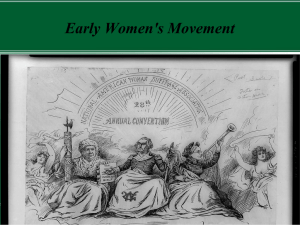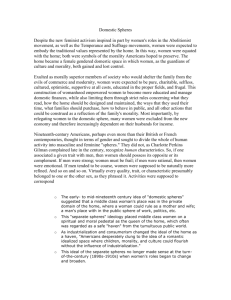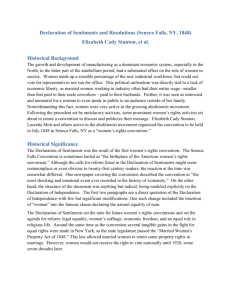The Seneca Falls Convention
advertisement
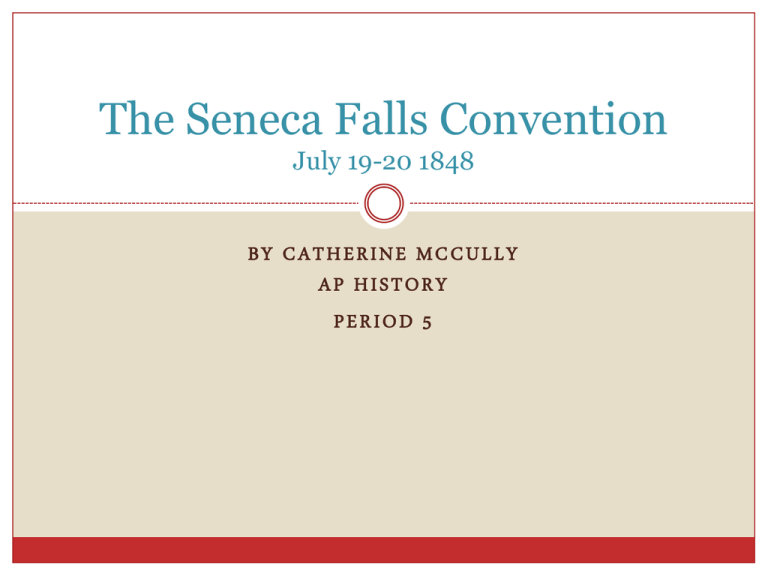
The Seneca Falls Convention July 19-20 1848 BY CATHERINE MCCULLY AP HISTORY PERIOD 5 The Seneca Falls Convention was started by two women: • ELIZABETH CADY STANTON • LUCRETIA MOTT Elizabeth Cady Stanton 1815-1902 Raised with privilege and wealth Attended Troy Female Seminary where she received the best education for women in the 1830s. Married the abolitionist Henry Brewster Stanton When they moved from Boston to Seneca Falls, NY Stanton missed an intellectual community and found the inspiration to reform the feminine society. Lucretia Mott 1793-1880 Born in Massachusetts to a Quaker family When she was thirteen, she attended the Nine Partners Quaker Boarding School After graduation she became a teacher there, where her interest in Women's Rights was developed when she discovered the male teachers were paid three times more than women. What was the Convention? In 1848 Stanton and Mott organized a women’s rights convention in Seneca Falls, New York It went for two days with six sessions, including a lecture on law and many discussions on a woman’s place in society. A place they discussed the Declaration of Sentiments, women’s suffrage, right to retain property after marriage, divorce and child custody rights, and equal education opportunities. The Declaration of Sentiments and Resolutions “We hold these truths to be self-evident: that all men and women are created equal.” Signed by 68 women, 32 men-100 of the 300 attendees of the first women’s rights convention (now known as the Seneca Falls Convention) Sentiments based on the Declaration of Independence “Now, in view of this entire disfranchisement of one-half the people of this country, their social and religious degradation—in view of the unjust laws above mentioned, and because women do feel themselves…fraudulently deprived of their most sacred rights, we insist that they have immediate admission to all the rights and privileges which belong to them as citizens of these United States.” The First Day Morning Session Mott and Stanton both spoke to the crowd consisting of both men and women (men were not allowed to speak in this session). They spoke about the actions of women taking charge of their rights and the Declaration of Sentiments was read in a whole. Afternoon Session The Declaration was read again and more changes were made. Mott read a humorous article written by Martha Wright and Elizabeth W. M’Clintok read a speech. Evening Session Mott spoke again and according to a newspaper it was “one of the most eloquent, logical, and philosophical discourses which we ever listened to.” The Second Day Morning Session The Declaration was read yet again but this time it was signed by 100 attendees of the crowd. Multiple people spoke about the rights of women and the progression of their roles in society. Afternoon Session The Declaration was discussed and the 9th sentiment, which was regarding women's right to vote, was debated. Fredrick Douglass, the only African American present, stood up and said he could not accept the right to vote himself as a black man if woman could not also claim that right. Evening Session Many people spoke, including Thomas M'Clintock, Stanton, Douglass and Mott all urging their audience to take a stand and support the rights of women. What did the convention accomplish? It brought light on the women’s suffrage. It empowered women to take control of their own rights and make a change. Started a revolution of women’s place in society, with an amendment passed by congress in 1919 accepting women’s right to vote.
